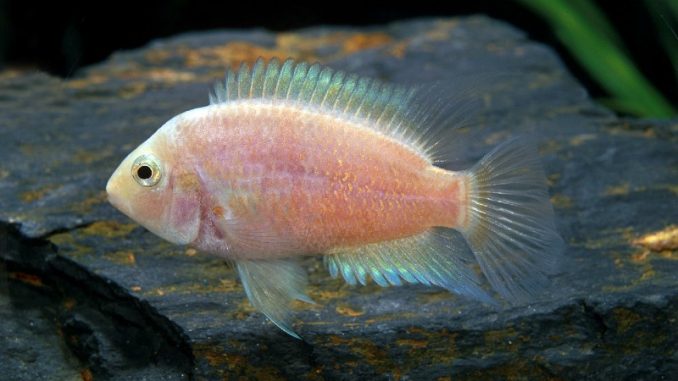
The pink convict cichlid is a freshwater fish of the Cichlidae family. This unique cichlid species is related to several species under the genus Amatitlania, including the blue convict and black convict cichlids.
The pink convict cichlid is native to Central America and inhabits the warm rivers and streams across Honduras, Nicaragua, Guatemala, Costa Rica, and Panama.
These fish are pearly pink to white-ish pink with a metallic sheen. The fish are territorially aggressive and must be kept with similar-sized fish.
Pink convict cichlids are popular among aquarists because of their beautiful color. These fish are easy to care for and cheap to maintain.
TABLE OF CONTENTS
Pink Convict Cichlid Facts & Overview
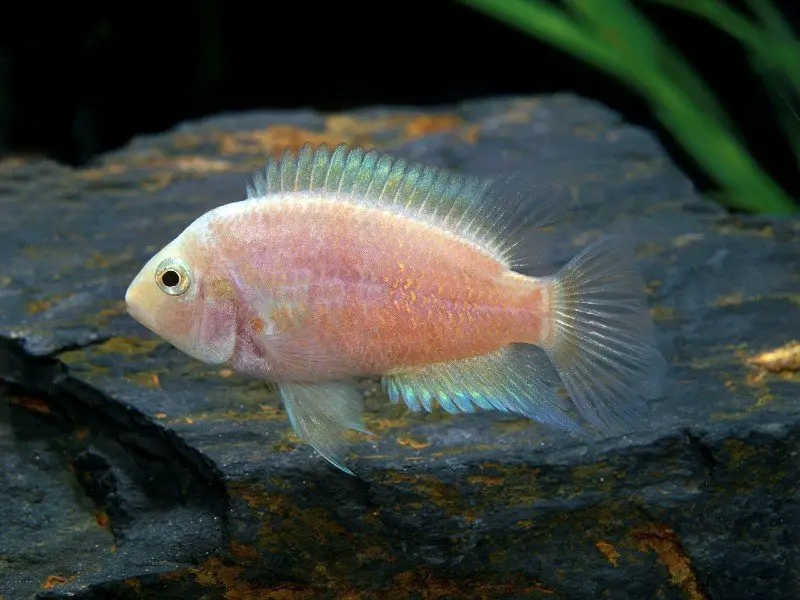
| Category | Rating |
| Care Level: | Easy |
| Temperament: | Aggressive |
| Color: | Pink, whitish pink with metallic sheen |
| Lifespan: | 8-10 years |
| Size: | ~5.9 Inches |
| Diet: | Omnivore |
| Family: | Cichlidae |
| Minimum Tank Size: | 10 gallons tank for each fish. |
| Tank Setup: | Freshwater, plants, caves |
| Compatibility: | similar sized or bigger aquarium fish with same aggression level |
Pink convict cichlids are scientifically called Archocentrus nigrofasciatus. These fish are part of the Cichlidae family.
The name pink convict cichlid emanates from its pinkish-white coloration. The common name “convict cichlid” comes from the vertical stripes that resemble British convict uniforms.
The pink convict cichlid originated from Central America, dominating the streams, rivers, and tributaries in the area.
Pink convict cichlids prefer moving water with plenty of rocks and some plants in the wild. They are hardy fish and will do well in most water conditions. Pink convict cichlids are a result of controlled breeding of the convict cichlid, so they are hard to find in the wild.
These fish are popular amongst aquarists due to their ease of care and unique appearance. They cost between $5.99 and $40 and are easy to find in pet shops and online.
Appearance and Behavior
The pink convict cichlid has a pink and white coloration, as its name suggests. These fish have pointed dorsal and anal fins and an oval-shaped body.
Male pink convict cichlids feature larger dorsal and anal fins, while females have shorter fins and an orange patch on their bellies.
The females become plump and round when filled with eggs. Their color intensifies, making it clear when the fish are ready to spawn. The females initiate the spawning process and prepare a nesting site.
Pink convict cichlids act calmer than usual, become fussy eaters, and show increased antipredator behavior when stressed.
Juvenile pink convict cichlids measure between 1.5-2 inches (4-5 cm) and 5.90 inches (15 cm) long. Mature fish will weigh between 1.2 to1.3 ounces (34-36 gm) when mature.
Typical Behavior
Pink convict cichlids are active fish and swim in a school of six fish most of the time. They are aggressive and territorial when competing for resources, spawning, or protecting their fry. They should only share a tank with same-sized fish, larger fish, or fish with a similar temperament.
Aggressive cichlids chase other fish around the tank. Severe injuries are rare unless the fish are housed with bigger or more aggressive tankmates.
Pink convict cichlids are less active at night, although they exhibit heightened aggression due to their poor ability to see in the dark. They rest under rocks or plants and will come out when daylight breaks.
Pink convict cichlids are active feeders and will eat during the day. They dart around the tank quickly during meal times.
Pink Convict Cichlid Care
Caring for pink convict cichlids is straightforward. The first thing to consider is the tank size. The cichlids need a lot of space, and bigger tanks offer more stability and flexibility to handle aggressive or territorial behavior.
The pink convict cichlid lives in moving warm freshwater streams, rivers, and tributaries in the wild. Their ideal habitat consists of rocks, driftwood, and plenty of plants. Mimicking the pink convict cichlid’s natural habitat in an aquarium setting is essential for their well-being.
The aquarium should contain rocks, plants, roughage, and other hiding places. They love moving water, so add a filter and an airstone to provide some current in the tank.
Pink convict cichlids are tropical fish, so they need heated water between 70 and 84°F (21-29° C).
These fish are active feeders and eat a variety of food, including flakes and pellets. Add a variety of fresh vegetables and live food to the pink convict cichlid’s diet for optimal health and bright color.
Pink convict cichlids are easy to care for but are susceptible to bacterial infections caused by poor water conditions. Poor water conditions can also cause diseases and infections such as ich, fin rot, and black spot.
Prevent bacterial infections and other diseases by keeping water clean and regulating the tank temperature.
Habitat and Tank Requirements
Create a habitat that mimics the convict cichlid’s natural ecosystem in the wild. These fish live in murky waters that contain lots of vegetation and rocks. An ideal tank setting should include plenty of hiding places, natural plants, and rocks.
The water should be soft to moderately hard, with a pH level between 7.0-8.0. Ensure the water hardness (dH) is 9-20.
Their tank temperature should be about 70-80°F (21.1-26.7°C). Install aquarium heaters to maintain optimal water temperatures.
Create some current in the tank using a filter and airstone to mimic their natural environment.
Pink convict cichlids are also active swimmers, so the tank should be spacious to accommodate the fish’s swimming.
Tank Conditions
The tank water should be clean and free of debris. Regular water changes and gravel cleaning ensure a healthy tank environment.
Each pink convict cichlid requires at least ten gallons of water to accommodate its swimming and hideout needs. Keeping a group of five to six fish in a 55-75 gallon tank is possible.
Keep pink convict cichlids alone in a tank that holds ten gallons of water or less to avoid overcrowding. Maintain the water temperature at 70-80°F (21.1-26.7°C).
Installing water heaters will help stabilize water temperatures. The ideal pH range is 7.0-8.0, and the water hardness must stay between 9-20 dH.
Sand and driftwood are the best substrates for pink convict cichlid tanks. You can also incorporate hardy plants like Java ferns and Amazon swords in the tank.
Pink convict cichlids are also algae eaters that produce a lot of waste. These fish require a water filtration system that provides a good current, maintains clean water, and removes excess waste from the bottom of the tank.
Tank Mates
Pink convict cichlids get along best with fish with similar physical attributes.
Pink convict cichlids are aggressive, territorial fish and will attack and bite other fish that invade their territory or look like potential rivals.
T-bar cichlids, Green terrors, jewel cichlids, and the Honduran red points make good tank mates. These are fast-swimming fish and can match the speed and temperament of the pink convict cichlid. Other good choices are blue acaras, pictus catfish, and firemouths.
Keep your pink convicts in a separate tank for successful spawning when breeding the fish. The breeding pairs will defend their nests, which could harm other fish in the tank. Avoid keeping breeding pairs in a community tank.
Take caution when keeping pink convicts with non-fish tank mates. Pink convict cichlids will eat tiny snails and other creatures that can fit in their mouths. They will also feed on insect larvae, and will not tolerate invertebrates such as shrimps in their tanks.
Diseases
The pink convict cichlid is prone to some diseases. The most common diseases manifest because of poor water conditions. Ich, fin rot, and black spot are common issues. Maintaining a clean tank and practicing good water hygiene will keep the fish healthy.
Bacterial infections are common and are often a result of injury and a weakened immune system. Infected fish will look lethargic and have clamped fins. Research shows that dietary carotenoids can help manage bacterial infections in convict cichlids, but treating with antibacterials such as Metronidazole is ideal.
Gill flukes will manifest in the form of lesions with bloody patches on the body. Gill flukes result from a fungal infection, which is easy to treat by improving water conditions and administering a specific dose of antifungal medication.
Immediately isolate affected fish. Treat sick fish with antibiotics or antifungal medications, and ensure proper water conditions. Give the fish fibrous-rich vegetables such as zucchini, spinach, and cucumber to help the fish recover quickly.
Diet and Feeding
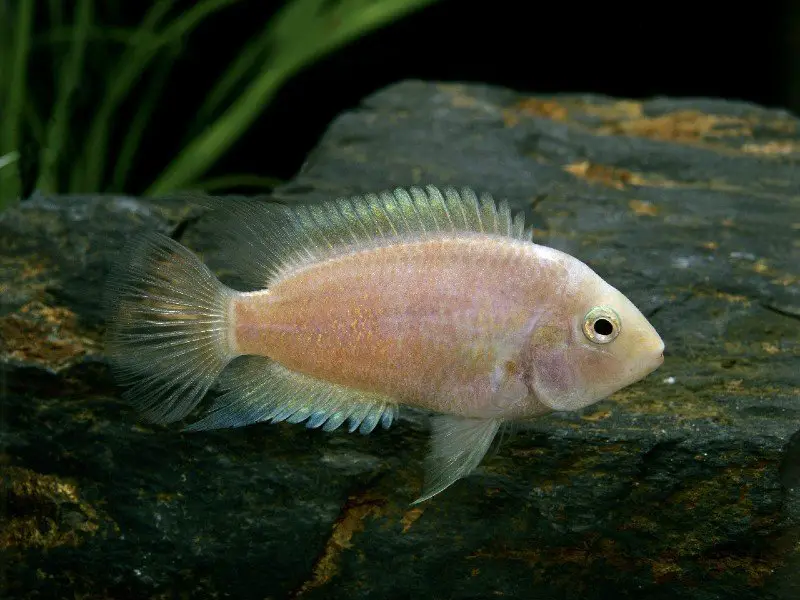
Pink convict cichlids feed on algae, insects, and larvae in the wild. They will also feed on smaller fish, snails, and small crustaceans.
These fish are omnivores and will feed on flakes, pellets, and pellet foods. Supplement the cichlids’ diet with bloodworms, brine shrimp, daphnia, krill, and mysis shrimps. Live foods such as white worms and brine shrimp promote fast growth.
Feeding pink convict cichlids an exclusive diet of live food can lead to health complications. Adding vegetables such as blanched zucchini and spinach to the food ration once in a while will ensure proper nutrition.
Alger wafers and brine shrimp will help the fish maintain a pink coloration. Feed the pink convict cichlids two or three times a day while ensuring enough time to eat. Stick to the recommended food portions to avoid overfeeding.
Breeding
Breeding the pink convict cichlid in an aquarium setting is challenging. Reproduce the fish in a separate breeding tank to make breeding easier.
Keeping them in a separate enclosure will remove the chance of other fish stealing the pink convict cichlid’s food and give the laying female a safe environment for her eggs and fry.
The first step is to choose a pair of male and female adult pink convict cichlids. Transfer the fish into a 10-gallon tank to ensure effective breeding. Tank requirements are not as specific when breeding convict cichlids.
Maintain the water temperature at 75-78 °F (24-26 °C) to induce breeding. Keep the water flow low and avoid bright lighting. Ensure the water is soft and has a neutral pH. Provide a spawning mop or a few Java ferns in the breeding tank.
A pot filled with a few inches of peat, crushed snail shells, or clay flower pots will aid the spawning process. The fish will use this as a spawning and egg-laying site. Feed the fish protein-rich foods such as brine shrimp and bloodworms to prepare the cichlids for the breeding process.
Give the fish plenty of space and privacy to lay eggs. The female will deposit the eggs under the mop or in the flowerpot and will guard the eggs for 3-4 days. The eggs will hatch after four days, and the fry will drop down to the bottom of the tank.
The parents will take care of their fry until they’re one week old. Feed the fry with newly hatched brine shrimp or infusoria. Once the fry mature into juvenile fish, feed them finely powdered fry food and later on more complex foods like shrimp pellets.
Should You Get a Pink Convict Cichlid for Your Aquarium?
The pink convict cichlid is an excellent species for both beginners and experienced aquarists. They’re relatively easy to care for, but their aggressive behavior may threaten other tank inhabitants. Ensuring the pink convict cichlids can safely coexist with other popular fish is vital.
Pink convict cichlids will add a unique aesthetic value to an aquarium setup despite their aggressive nature. Their bright pink coloration and large size make them a popular choice among aquarists.

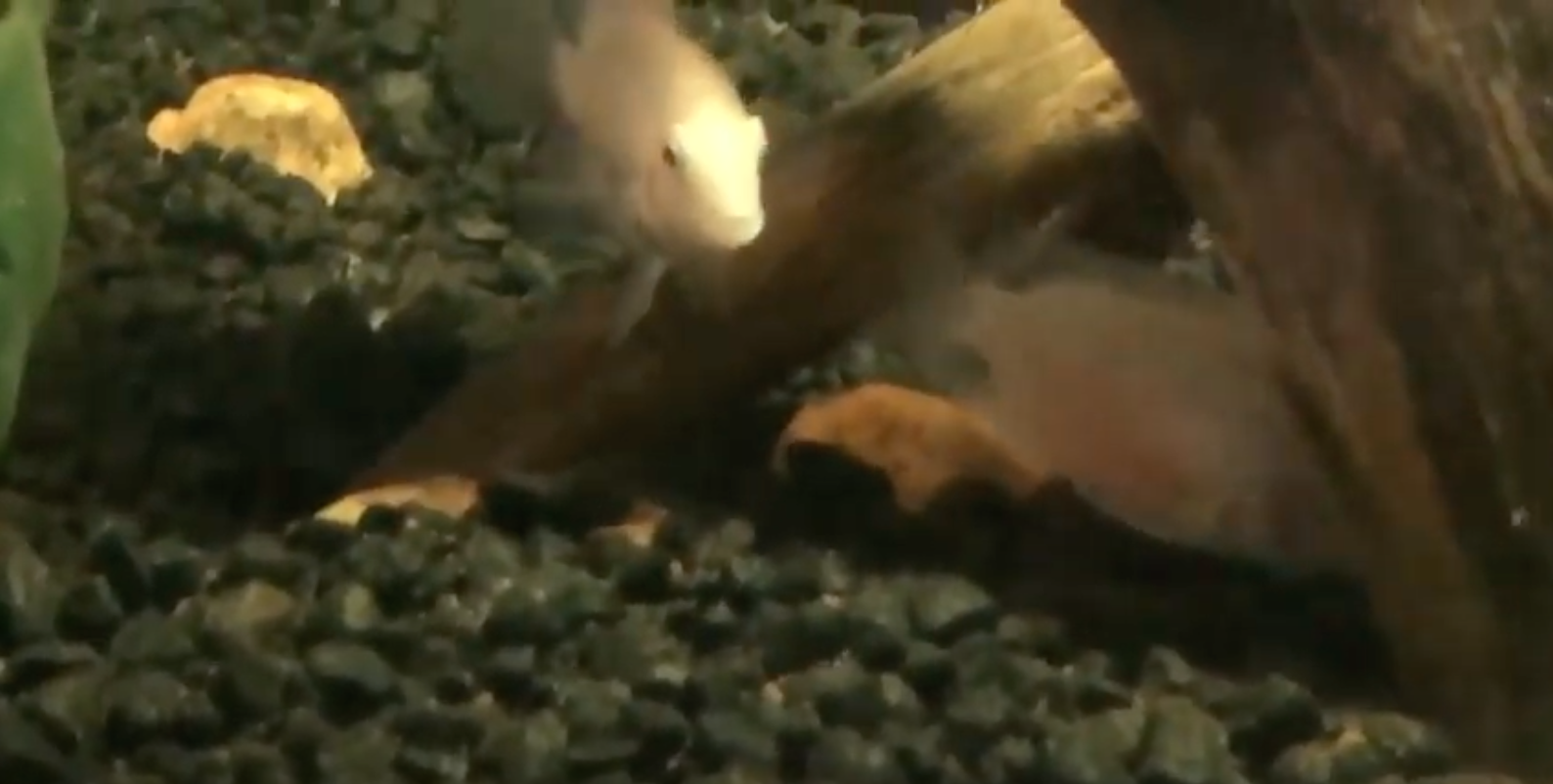
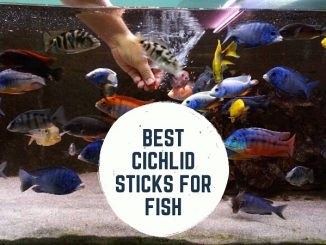
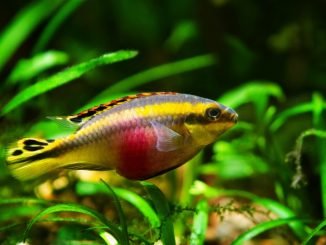
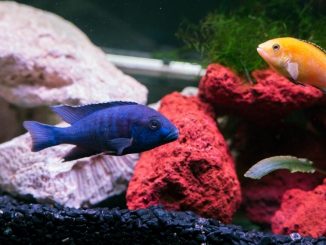
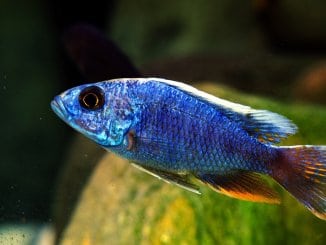
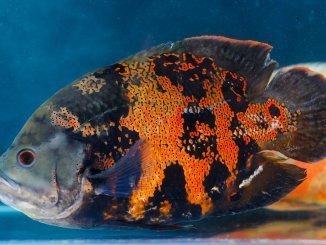
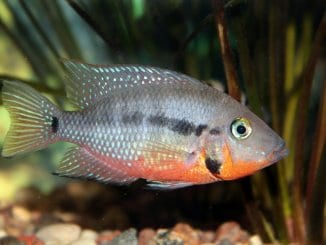
Be the first to comment